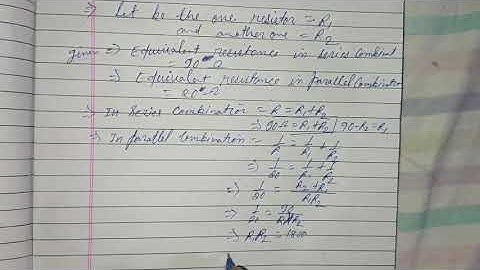 Page 2
It depends on how you came by the information that "at least one of them was heads". I'm not sure why no one brings this up, it's an incredibly important piece of information that's missing. Try and apply this theory to reality and prepare to be confused. For example, if you're blind, and you flip two coins, a machine sees them and says "at least one of the coins is heads" what are the odds the other coin is heads? In that case you flipped two coins and are given that "at least one of them is heads". It's not 33%! It depends on the rule your machine is following when he talks. If his rule is "If at least one coin shows heads, I will always inform them of such and never anything else" then yes, it'll be 33%. But if it's rule is almost anything else, it won't be! For example if it's rule is "I will always inform him regarding one of the coins that I see" Then half the time He'll say heads, half the time he'll say tails. The sample space in that scenario is (assuming each flip combination happens twice for full sample space) HH says Heads 2 times TH says Heads 1 time and Tails 1 time HT says Heads 1 time and Tails 1 time TT says Tails 2 times In that more likely case where the machine randomly chose one coin to tell you of, If he tells you "one of the coins is heads" the 2/4 times the other coin will be heads too. 50%, not 33% Whenever you see the word "given that..." always wonder, "but how is it given?". (I mean maybe not useful in a math test, but 100% needed in real life probabilities) All I'm saying is knowing that "at least one of the coins is heads" is a given, is not nearly enough information if you don't know how it was given.
Two (presumably fair) coins being thrown four times each is equivalent to one coin being thrown eight times - order is irrelevant as each event is independent. We can model this with a binomial distribution: the number of heads, $X$, is given by $X \sim B(8, 0.5)$. $P(X=2) = \binom{8}{2}0.5^2(1-0.5)^6 = 28\times\frac{1}{256} = 0.109375$ (or $\frac{7}{64}$). If you're not familiar with the binomial distribution, the $\binom{8}{2}$ is the number of ways that two heads out of 8 could be tossed (i.e. 1st and 2nd; 1st and 3rd; 1st and 4th; ...; 7th and 8th). Then $0.5$ is the probability of a head - this event must occur twice, so we square it, and $1-0.5$ is the probability of a tail - this occurs six times, so we raise it to that power. For the next question, let's say $Y$ is the number of times we roll two heads with our two dice. I believe you're asking for $P(Y=1\;|\;Y\ge1)$. We can again model $Y$ with a binomial distribution, noting that the probability that both coins are heads is a quarter: $Y\sim B(4, 0.25)$. Now, $P(Y=1) = \binom{4}{1}0.25^1(1-0.25)^3 = \frac{27}{64}$. $P(Y\ge1) = 1 - P(Y = 0) = 1 - (1-0.25)^4 = 1-\frac{81}{256} = \frac{175}{256}$. So the probability that the former is true, given that the latter is, is: $\frac{27}{64} \div \frac{175}{256} = \frac{27\times256}{64\times175} = \frac{108}{175}\approx0.6171$.
Here we will learn how to find the probability of tossing two coins. Let us take the experiment of tossing two coins simultaneously: When we toss two coins simultaneously then the possible of outcomes are: (two heads) or (one head and one tail) or (two tails) i.e., in short (H, H) or (H, T) or (T, T) respectively; where H is denoted for head and T is denoted for tail. Therefore, total numbers of outcome are 22 = 4The above explanation will help us to solve the problems on finding the probability of tossing two coins. Worked-out problems on probability involving tossing or flipping two coins: 1. Two different coins are tossed randomly. Find the probability of: (i) getting two heads (ii) getting two tails (iii) getting one tail (iv) getting no head (v) getting no tail (vi) getting at least 1 head (vii) getting at least 1 tail (viii) getting atmost 1 tail (ix) getting 1 head and 1 tail Solution: When two different coins are tossed randomly, the sample space is given by S = {HH, HT, TH, TT} Therefore, n(S) = 4. (i) getting two heads: Let E1 = event of getting 2 heads. Then,E1 = {HH} and, therefore, n(E1) = 1. Therefore, P(getting 2 heads) = P(E1) = n(E1)/n(S) = 1/4. (ii) getting two tails: Let E2 = event of getting 2 tails. Then,E2 = {TT} and, therefore, n(E2) = 1. Therefore, P(getting 2 tails) = P(E2) = n(E2)/n(S) = 1/4. (iii) getting one tail: Let E3 = event of getting 1 tail. Then,E3 = {TH, HT} and, therefore, n(E3) = 2. Therefore, P(getting 1 tail) = P(E3) = n(E3)/n(S) = 2/4 = 1/2 (iv) getting no head: Let E4 = event of getting no head. Then,E4 = {TT} and, therefore, n(E4) = 1. Therefore, P(getting no head) = P(E4) = n(E4)/n(S) = ¼. (v) getting no tail: Let E5 = event of getting no tail. Then,E5 = {HH} and, therefore, n(E5) = 1. Therefore, P(getting no tail) = P(E5) = n(E5)/n(S) = ¼. (vi) getting at least 1 head: Let E6 = event of getting at least 1 head. Then,E6 = {HT, TH, HH} and, therefore, n(E6) = 3. Therefore, P(getting at least 1 head) = P(E6) = n(E6)/n(S) = ¾. (vii) getting at least 1 tail: Let E7 = event of getting at least 1 tail. Then,E7 = {TH, HT, TT} and, therefore, n(E7) = 3. Therefore, P(getting at least 1 tail) = P(E2) = n(E2)/n(S) = ¾. (viii) getting atmost 1 tail: Let E8 = event of getting atmost 1 tail. Then,E8 = {TH, HT, HH} and, therefore, n(E8) = 3. Therefore, P(getting atmost 1 tail) = P(E8) = n(E8)/n(S) = ¾. (ix) getting 1 head and 1 tail: Let E9 = event of getting 1 head and 1 tail. Then,E9 = {HT, TH } and, therefore, n(E9) = 2. Therefore, P(getting 1 head and 1 tail) = P(E9) = n(E9)/n(S)= 2/4 = 1/2. The solved examples involving probability of tossing two coins will help us to practice different questions provided in the sheets for flipping 2 coins. Probability Probability Random Experiments Experimental Probability Events in Probability Empirical Probability Coin Toss Probability Probability of Tossing Two Coins Probability of Tossing Three Coins Complimentary Events Mutually Exclusive Events Mutually Non-Exclusive Events Conditional Probability Theoretical Probability Odds and Probability Playing Cards Probability Probability and Playing Cards Probability for Rolling Two Dice Solved Probability Problems Probability for Rolling Three Dice 9th Grade Math From Probability of Tossing Two Coins to HOME PAGE
Didn't find what you were looking for? Or want to know more information about Math Only Math. Use this Google Search to find what you need.
Personalized AI Tutor and Adaptive Time Table, Self Study Material, Unlimited Mock Tests and Personalized Analysis Reports, 24x7 Doubt Chat Support,. Buy NowPersonalized AI Tutor and Adaptive Time Table, Self Study Material, Unlimited Mock Tests and Personalized Analysis Reports, 24x7 Doubt Chat Support,. Buy NowPersonalized AI Tutor and Adaptive Time Table, Self Study Material, Unlimited Mock Tests and Personalized Analysis Reports, 24x7 Doubt Chat Support,. Buy NowPersonalized AI Tutor and Adaptive Time Table, Self Study Material, Unlimited Mock Tests and Personalized Analysis Reports, 24x7 Doubt Chat Support,. Buy NowPersonalized AI Tutor and Adaptive Time Table, Self Study Material, Unlimited Mock Tests and Personalized Analysis Reports, 24x7 Doubt Chat Support,. Buy NowPage 2
Personalized AI Tutor and Adaptive Time Table, Self Study Material, Unlimited Mock Tests and Personalized Analysis Reports, 24x7 Doubt Chat Support,. Buy NowPersonalized AI Tutor and Adaptive Time Table, Self Study Material, Unlimited Mock Tests and Personalized Analysis Reports, 24x7 Doubt Chat Support,. Buy NowPersonalized AI Tutor and Adaptive Time Table, Self Study Material, Unlimited Mock Tests and Personalized Analysis Reports, 24x7 Doubt Chat Support,. Buy NowPersonalized AI Tutor and Adaptive Time Table, Self Study Material, Unlimited Mock Tests and Personalized Analysis Reports, 24x7 Doubt Chat Support,. Buy NowPersonalized AI Tutor and Adaptive Time Table, Self Study Material, Unlimited Mock Tests and Personalized Analysis Reports, 24x7 Doubt Chat Support,. Buy Now |

Pos Terkait
Periklanan
BERITA TERKINI
Toplist Popular
#2
Top 5 wilo fluidcontrol schaltet nicht ab 2022
1 years ago#3
#4
Top 8 warum kein blutspenden nach piercing 2022
1 years ago#5
#6
Top 8 o que é pirangagem 2022
1 years ago#7
#8
Top 8 o que é gluten free 2022
1 years ago#9
#10
Top 8 mondeo mk3 türgriff öffnet nicht 2022
1 years agoPeriklanan
Terpopuler
Periklanan
Tentang Kami
Dukungan

Copyright © 2024 ketiadaan Inc.


















